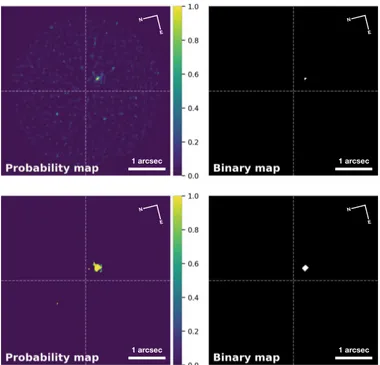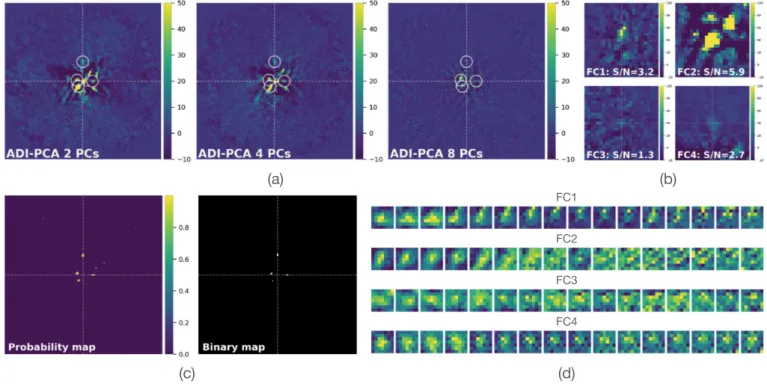Supervised detection of exoplanets in high-contrast imaging sequences
Texte intégral
Figure




Documents relatifs
In conclusion, anomaly detection techniques are attractive to be deployed in detection systems, as an adjunct to misuse detection, since they are more likely to detect yet
Antarctic Plateau Interferometer Differential Phase/Closure Phase Hot Jupiter planet characterization (3-5µm) Darwin (ESA) Nulling Space Interferometer Terrestrial Planet
ANDROMEDA: Applications on various experimental data 6.1.4 Results from ANDROMEDA applied to the GJ504 SPHERE-IRDIS images In order to compare the results obtained with the
Figure 2: Expected overhead against the number of partial verifications when a single type of detector is employed for three different detectors (with their respective cost and
Both figures illustrate the superior detection performance of PACO for faint sources (all sources are detected) and the im- proved behavior with respect to false alarms (no false
The needs of high energy physics experiments have brought usual commercial CMOS sensors to the ability of detection single (charged) particle at high frame rate, above 1000
9 and 10 (wwS/N = 42.7), the improvement is in relatively good agreement with the contrast curves of Fig. 2018a ), the achievable contrast of PACO ASDI can be computed at every point
Among the reference point-spread function subtraction techniques for ADI post-processing, VIP includes several flavors of principal component analysis (PCA) based algorithms, such





